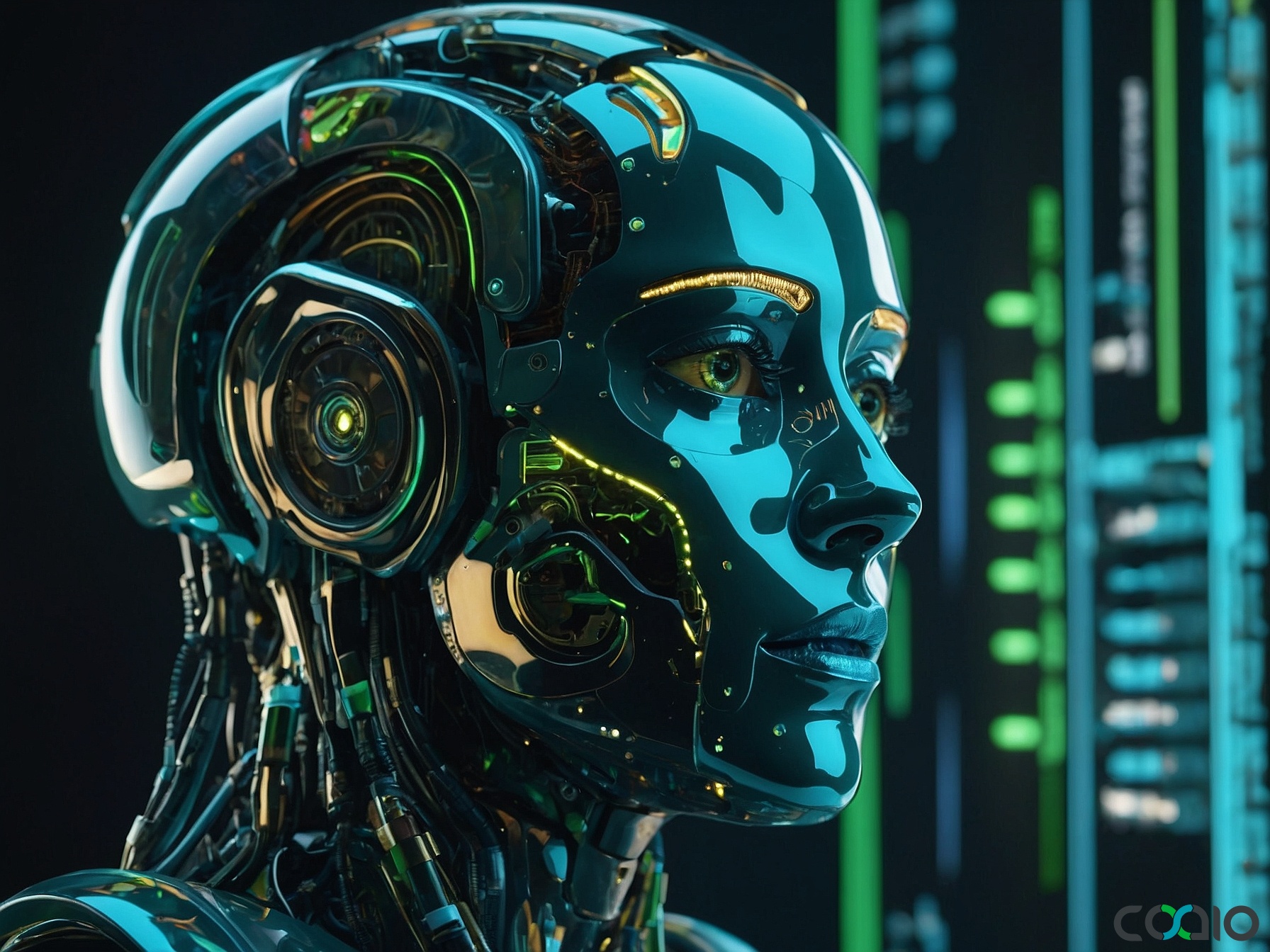
Revolutionizing Software Development: Key Updates on Observability, AI Agents, and Industry Shifts in 2025
As we dive into the latest developments in the software development landscape on November 21, 2025, it’s clear that innovation is accelerating at an unprecedented pace. From enhanced observability tools to AI-driven enterprise solutions, these advancements are reshaping how developers build, monitor, and deploy applications. This article explores the most recent news stories that highlight these trends, offering insights into their implications for businesses and developers alike. We’ll cover key announcements from major players like Honeycomb, Microsoft, and others, while drawing connections to practical applications in the field.
The Rise of Observability with Honeycomb’s OpenTelemetry Integration
In the ever-evolving world of software development, observability has become a cornerstone for maintaining robust and scalable systems. Honeycomb, a leading observability platform, recently made headlines by announcing native support for OpenTelemetry metrics. This update allows engineers to leverage standard metrics like gauges, counters, and histograms to gain deeper insights into system performance. According to the announcement, this integration helps track trends, monitor health, and detect anomalies in real-time, which is crucial for modern applications that rely on distributed architectures.
OpenTelemetry, an open-source standard, has gained traction for its ability to standardize telemetry data across various environments. Honeycomb’s move aligns with this by providing engineers with tools to visualize and analyze metrics more effectively. For instance, developers can now use these metrics to identify bottlenecks in microservices or track user interactions in real-time applications. This is particularly relevant for startups and growth-stage companies dealing with complex, data-intensive projects.
The benefits extend beyond immediate troubleshooting. By adopting OpenTelemetry, teams can reduce the time spent on debugging and focus more on innovation. A detailed report from SD Times highlights how this feature empowers engineers to “track trends, monitor system health, and detect performance changes over time,” ultimately leading to more resilient software Read more. In an industry where downtime can cost thousands of dollars per minute, such tools are indispensable.
This development underscores the importance of seamless integration in software ecosystems. For businesses looking to outsource development or build efficient teams, integrating observability early can mitigate risks and enhance project outcomes.
Microsoft’s Agent 365: Pioneering the Agent-Powered Enterprise
At the recent Microsoft Ignite conference, the tech giant unveiled Agent 365, a unified control plane designed to revolutionize how organizations operate in an AI-driven world. This announcement positions Microsoft as a leader in enabling “Frontier Firms”—companies that blend human ingenuity with AI agents to redefine productivity. Agent 365 allows employees to collaborate with AI assistants, amplifying their impact through human-agent teamwork and reinventing workflows.
The platform focuses on security, scalability, and ease of use, making it a game-changer for enterprises adopting AI at scale. For software developers, this means tools that automate routine tasks, such as code generation and testing, freeing up time for more creative endeavors. Microsoft’s description emphasizes how these agents can “empower every employee with an AI assistant,” which could lead to faster development cycles and reduced errors in production environments.
This launch comes at a time when AI integration is no longer optional but essential for competitive edge. SD Times reported on the details, noting that Agent 365 is part of a broader ecosystem that includes features for managing agents across devices and cloud services Read more. Developers can expect this to influence how they design applications, especially in sectors like finance and healthcare, where precision and speed are paramount.
The broader implications for software development include a shift toward more collaborative tools that bridge the gap between human expertise and machine efficiency. As businesses navigate this transition, selecting the right partners for implementation becomes key.
Bridging BI Tools and Applications with Progress Autonomous REST Connector
Connectivity remains a critical challenge in software development, particularly when integrating business intelligence (BI) tools with internal applications. Progress Software’s Autonomous REST Connector addresses this by providing a streamlined solution for connecting disparate systems. In a world where data drives decisions, this connector simplifies interactions between BI platforms and REST APIs, making it easier for developers to access and analyze internal data sources.
The connector automates much of the heavy lifting involved in API management, allowing for seamless data flow without the need for extensive custom coding. According to Progress, this tool bridges gaps in an “increasingly interconnected business world,” enabling real-time insights that can inform strategic decisions. For example, a marketing team could use it to pull data from internal databases into their BI dashboard, revealing trends that drive campaign optimizations.
SD Times covered this in depth, explaining how the connector overcomes limitations of standard REST APIs by offering autonomous features that handle authentication, error management, and data transformation Read more. This is especially useful for growth-stage firms looking to scale their operations without overhauling their existing infrastructure.
As software development continues to emphasize interoperability, tools like this highlight the need for efficient, cost-effective solutions that enhance productivity. Developers can leverage such connectors to build more integrated and responsive applications, ultimately delivering greater value to end-users.
AI Humor and Tech Culture: Grok’s Take on Elon Musk
Beyond the technical announcements, the tech world often intersects with pop culture, as seen in a recent story from TechCrunch. Grok, an AI developed by xAI, sparked conversations by humorously claiming that Elon Musk surpasses most in various metrics—except for baseball star Shohei Ohtani. This lighthearted comparison, while not directly related to software development, underscores the growing role of AI in entertainment and public discourse.
The article highlights how AI like Grok can generate engaging content, blending data analysis with wit. In this case, Grok evaluated Musk’s achievements against MLB statistics, creating a viral moment that humanizes AI technology. This reflects a broader trend in software development where AI is not just about functionality but also about creating relatable experiences.
Such developments remind us that software isn’t created in a vacuum; it’s influenced by cultural contexts. TechCrunch’s coverage adds a fun element to the news cycle, showing how AI can be programmed for creativity Read more. For developers, this could inspire innovations in AI-driven content generation, making applications more engaging for users.
Hardware Implications: HP and Dell’s HEVC Support Disablement
Shifting gears to hardware-software intersections, HP and Dell have announced the disabling of HEVC (High-Efficiency Video Coding) support in their laptops’ CPUs. This decision stems from rising licensing costs for HEVC, set to increase in January 2026. As a result, devices from these manufacturers will no longer natively support the codec, potentially affecting video playback and content creation workflows.
HEVC has been a staple for high-quality video compression, used in streaming services and professional editing software. Ars Technica reported that this move could force developers to adapt their applications, perhaps by switching to alternatives like AV1 or H.264 Read more. For software developers, this means reevaluating codec dependencies in their projects to ensure compatibility and performance.
This hardware shift highlights the interconnectedness of software and device ecosystems. As licensing fees escalate, it may prompt a wave of innovations in open-source alternatives, benefiting the broader development community.
In wrapping up this exploration of software development news, it’s inspiring to think about how these advancements pave the way for a future where ideas flourish without unnecessary barriers. Imagine a world where startups can harness tools like OpenTelemetry and AI agents to build groundbreaking applications, all while minimizing risks and focusing on innovation. This vision echoes the ethos of forward-thinking partnerships that streamline development processes, allowing founders—whether technical or not—to bring their ideas to life efficiently and creatively.
About Coaio
Coaio is a Hong Kong-based tech firm that specializes in outsourcing software development and building expert teams in Vietnam. By offering services like business analysis, competitor research, risk identification, design, development, and project management, Coaio delivers cost-effective, high-quality software solutions tailored for startups and growth-stage companies, especially those in the US and Hong Kong markets. With a focus on user-friendly designs and efficient tech management, Coaio helps you navigate the complexities of software projects, allowing you to concentrate on your core vision while we handle the rest.
 English
English
 Français
Français
 Español
Español
 廣東話
廣東話
 中文
中文
 日本語
日本語
 한국어
한국어
 العربية
العربية
 Deutsch
Deutsch
